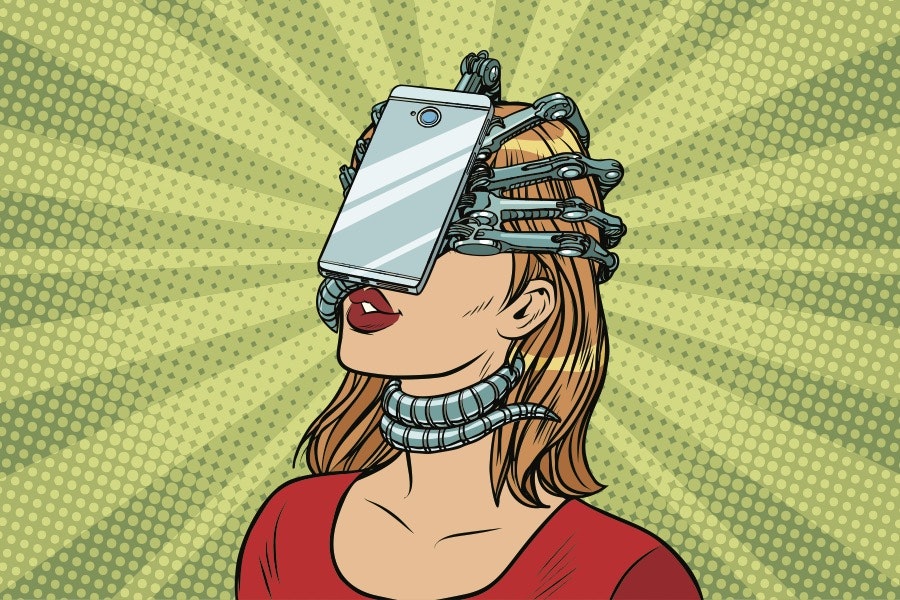
Have you noticed that everyone around you — the colleagues you work with on a daily basis, the clients that you’ve had for years, and even your closest friends and family members — have seemed stressed out lately? All of us have dealt with anxiety during the COVID-19 pandemic, but recently many of us have been a little short with each other, becoming overly sensitive and more likely to take things the wrong way.
All of us, to a greater or lesser extent, have spent the last year isolated from people we used to interact with in person. Face-to-face communication was replaced by meetings via Zoom or Google Meet or other video conferencing software. After Zoom fatigue set in, we replaced video calls with group chats or sometimes even just texting. Our communications were literally all thumbs.
Is it any wonder that we’re stressed out? For the first time in more than a year, in-person conversations are a real possibility and we have to relearn how to communicate with each other.
Over the past year we’ve experienced what I’ve been calling a “digital pandemic,” and it’s hit us a lot harder than we think. Team cohesion has suffered. Since almost all meetings have switched to virtual, two-thirds of workers say that their sense of connection with colleagues is the same or has gotten worse. Collaboration has also taken a hit.
It turns out that for our own mental health, we sometimes need to be in the same room as our coworkers. That doesn’t mean we need to be in the office five days a week, or that our entire team needs to be there at the same time. But to battle the isolation caused by this digital pandemic, we have to see each other face to face.
This past week, as I began writing this post, I called a mandatory all-hands meeting here at JBC and Janou Pakter. The subject line of the email was “IT’S ANOTHER ZOOM,” but this meeting was a little different because I had a handful of colleagues with me in our New York headquarters. The topic? Getting back together. The world is different now. I recognize it, and everyone else should as well. Moving forward, there will be three types of colleagues at JBC: those who prefer working remotely, those who are gung-ho to be back in an office full-time, and those (like me) who will need something in between those two options. Imagine how powerful those days will be as we’re sitting around our offices talking with each other again. No phones. No email. No chit chat on Workplace or Teams interrupted by someone’s terrible internet connection. Just good old-fashioned talking.
As soon as it’s safe to do so — and this will depend on a lot of factors, from the size of the staff to the configuration of the space — we should start bringing our teams back together, whether it’s a few times a week as many of us at JBC will be doing, or even on a rotating schedule. As you start putting that plan in place, here are a few things to consider:
Bring back the creatives first. I’m not just saying this because JBC and Janou Pakter put a lot of energy into recruiting for creative teams. There’s a good reason that Lego prioritized its designers when it began bringing its staff back to the office. To get your creative team firing on all cylinders, they need to be in the same room as their colleagues. That’s why almost a quarter of workers say that they have been less creative since their interactions have become mostly virtual. Can you imagine what our favorite apparel, electronics, or cars would look like, feel like, and even fit like if they were innovated by people working remotely from each other?
Keep new hires top of mind. Your newest hires are the most vulnerable. They are the ones who have few or no connections to the staff and haven’t figured out the company culture. The virtual onboarding process that you used over the past year isn’t going to cut it. Pair them up with one of your veterans, and make sure they get some face time even before their first official day in the office.
But don’t forget everyone else. While your newest hires might be the most vulnerable, your old guard is feeling it, too. Not everyone is built to live and work remotely. As your competitors return to work, they suddenly have an attractive option for those employees you are keeping isolated. It’s called camaraderie.
Create a “reboarding” process. Since most of them have been working from home for more than a year, almost all our employees are essentially “new.” Ease them back into the office culture. It’s not realistic to expect everyone to pick up where they left off. Set expectations for them and their teams and cut them some slack if they need some extra time to adjust to life back in the office. Increase the number of one-on-one meetings with each staffer, and use them to listen to their concerns and follow up with them.
Even before the reboarding process begins, you should make it clear that your team’s safety is a priority and communicate with them the steps you’ve taken to ensure their wellbeing. Have you added a new air filtration system? Moved desks farther apart? Letting people know will make them more comfortable returning to the office.
It’s time we put this digital pandemic behind us. If the last year has taught us anything about how we work, it’s that we benefit from being able to collaborate with our colleagues. We are more creative when we can bounce ideas off each other. And we communicate better when we are able to do it face to face.

